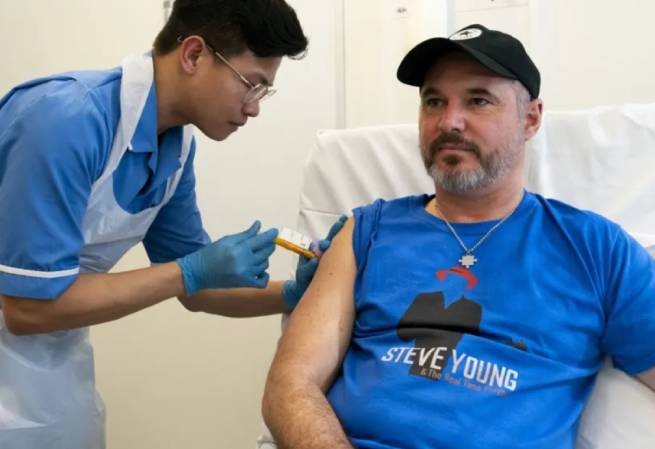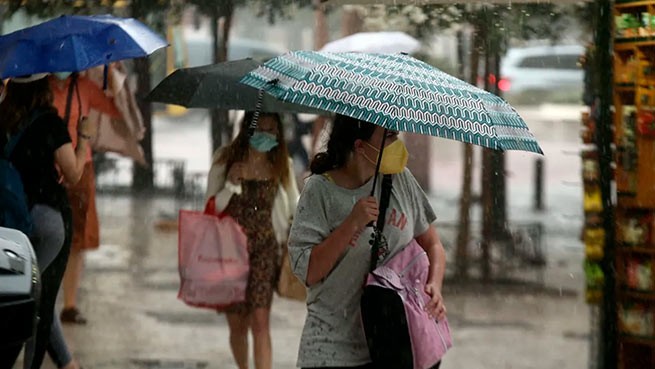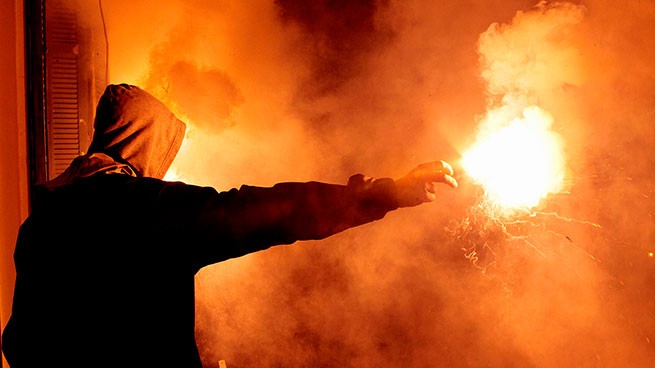How does a bully think, and what ultimately leads a young person to join such a violent gang? Criminalist Elena Sirmali and writer Kyriakos Athanasiadis talk to journalists from the Kathimerini edition.
Origins of fan violence
After the bloody Croat attack in New Philadelphia, many tried to answer the question: what made these hooligans leave Zagreb, come to the other side of the Balkans and start a fight with people whom they saw for the first time in their lives? What makes a young person join such a violent group?
“Violence in football is a global and timeless phenomenon. Currently, there is a direct link between people involved in violent incidents and people belonging to organized crime. Moreover, the methods of these groups are similar to those of criminal organizations. There is an organized plan, and then its execution,” criminologist Elena Syrmali notes in K.
https://rua.gr/news/sobmn/56975-kievskie-ultras-podderzhali-minami-svoikhz-kolleg-iz-zagreba.html
“In addition, these groups are often associated with politically extreme groups – both right and left. This element is very important and should not be underestimated. From a socio-psychological point of view, we must ask ourselves why so many young people participate in such violent incidents, why do they decide to join these gangs?”
Hooligans (as they call themselves, “stadium ultras”) operate inside and even on the periphery of the sports clubs they represent. They adopt the culture and historical roots of the club to a certain extent, but they act like hooligans of any skin color act.
“This phenomenon has nothing to do with the love of sports and football. Criminals are in this space for development, for the expression of criminal behavior. From a historical point of view, we can say that this phenomenon is timeless. Let’s not forget the Latin panem et circenses: many sports games in ancient times ended in riots and uprisings.In general, it can be said that certain social structures activate certain psychological processes.Let’s not forget Le Bon and the psychology of the masses.And also what Cohen noted about subcultures and delinquency, – emphasizes Elena Syrmali. – Football hooliganism includes many anti-social, delinquent and criminal behaviors that occur in the context of football (vandalism of private and public property, verbal and physical violence between team fans and others). All behavior of individuals/members of these groups is related to issues of social identity and self-categorization individuals.”
https://rua.gr/news/procrim/56956-opaseniya-massovykh-besporyadkov-v-gretsiyu-edut-pobratimy-aek-frantsuzskie-i-italyanskie-ultras.html
identity crisis
The ranks of fanatics are mostly made up of young people who look to their membership for answers to questions of identity or connection. Criminologist Elena Syrmali states: “The process of referring oneself to one group or another gives rise to conical identity and group, as well as deviant behavior“. In adolescence, the stage of identity crisis and the search for identity by every young person is decisive. Belonging to a group and identifying with it gives not only a sense of strength, but also a sense of belonging. A need that is eternal and universal. Behavior approved by the group is accepted by it members, even if it is transgressive. They rationalize within the rules of the subculture in relation to the dominant culture.”
“Each of us forms a personal identity with certain idiosyncratic, unique characteristics and specific relationships, and a social identity, that is, that part of our self-concept that arises as a result of participation in social groups. With categorization and absolute identification with a group, both in this case, with delinquent and / or criminal, there is a depersonalization of our “I” and members of another group. We treat others and ourselves as representatives of group norms. The norm of each group is that position in the group that combines the largest number of categorical characteristics , and also most contrasting with outgroup members,” he adds.
https://rua.gr/news/news/28853-stolknoveniya-mezhdu-futbolnymi-ultras-v-afinakh.html
Thus, a newcomer who finds himself in groups of this type feels like an active member of the organization – he acquires a vicarious substance that defines him and homogenizes him with his “comrades”.
“In this way, we treat ourselves and others not as unique individuals, but only as members/models of a category. The interesting thing is that an outside observer can pick up how much the individuals of the “opposing” groups have in common, which, of course, they cannot to capture the members themselves,” says Ms. Sirmali. “Another element that needs to be explored in relation to this phenomenon is personality traits, as well as data on disorders that have been associated with both substance use and aggression. Certain environmental factors can act as triggers to activate such behavior Delinquent and criminal behavior, fan violence are “justified” in the mind of the individual as appropriate behavior in support of the group to which he belongs Add to this other factors such as masculinity, alcohol and psychoactive substances, and you really get an explosive cocktail.”
https://rua.gr/news/sobmn/40666-grecheskie-ultras-i-dikie-epizody-nasiliya.html
This is how the phenomenon of hooliganism is “born”, which today takes place mainly outside the football field and acquires an additional dimension, thanks to the use of social networks that facilitate direct interaction with the “enemy”.
Ms. Syrmali believes that “the element of connection with extreme political groups is not a factor in the genesis of the phenomenon (cause) of fan violence. But it is a characteristic of this phenomenon, and in order to find solutions, we need to understand what it is. We confuse the reasons / factors with characteristics of phenomena. If you perceive the characteristic as a cause and see “causal” relationships, then the reaction will be superficial. It is necessary to understand what prevention and reaction are.”
Bully: Killer Caricature
“Sport is a peaceful image of war, because the first sports, such as chariot racing, javelin throwing, running or wrestling, were associated exclusively with combat skills, and hooliganism is the protogenesis of war,” the author of the article Kyriakos notes in “K”. Athanasiadis.
Trying to decipher the reasons pushing young people into the ranks of hooligans, he notes: “People in general worship violence, and men to a much greater extent. It’s just that the vast majority hide this “need” well and suppress it with pleasure. Not all, of course, and not always Many resort to bullying “if possible”. Bullies, on the other hand, seek conflict. So the promise of violence is by far the number one reason a boy turns to bullying: the other’s pain, his humiliation, his retreat from fear of more more violence, more bloodshed. Vandalism and destruction are not to blame for the hooligans, but for that part of the “ardent fans”, that part of the tribune that simply feels (regardless of whether this is actually the case) marginalized, rejected and rejected.
Further, Athanasiadis tries to outline the psyche of a young man who follows the hooligan counterculture: “Hooligans are a “bunch” of young people, men. A “macho” man beats and sometimes machos in order to satisfy his illness. He beats and maims mainly women and homosexuals – this is how they collectively call their “opponents.” They do this not because they “hate the state”, not because they are … unemployed, not from an inner need to feel finally part of a group, a brotherhood to which they will give up their identity, and for the protection of which they will supposedly “sacrifice””.
He believes that hooligans, while demonstrating a supposedly strong disposition, are actually cowards: “No bully will ever try to protect another member of his group, his brotherhood, his gang from the“ enemy ”. they will turn him in to save themselves: to be a hooligan, one needs not only a pathological birthright and a pathological love of violence – basically, one needs great cowardice.
Author Kyriakos Athanasiadis highlights the sports section with the actions of extreme fans: “We are not, after all, dealing with some kind of “social culture”, with strange rituals, traditional tattoos and other similar myths. And, of course, we are not dealing with… football.”
In conclusion, he notes that “when a sick ‘ideology’ is added to all of the above – most of them are neo-Nazis, although there are, of course, anarchists, and leftists, etc. – everything sinks even deeper into the mud. And if besides, your disease is reinforced by bonuses, gifts, drugs, money and promises, power, then you turn into a caricature of a legionary warrior in the service of your boss. A murderous caricature.
Translation by A.N.







More Stories
The Minister of Health called the protesters "insignificant people, kafirs"
Gold Switzerland: “We are in the last 5 minutes of our financial system – the collapse of everything is approaching”
Union of Judges: “People’s courts were created against us with the loyal attitude of the government”